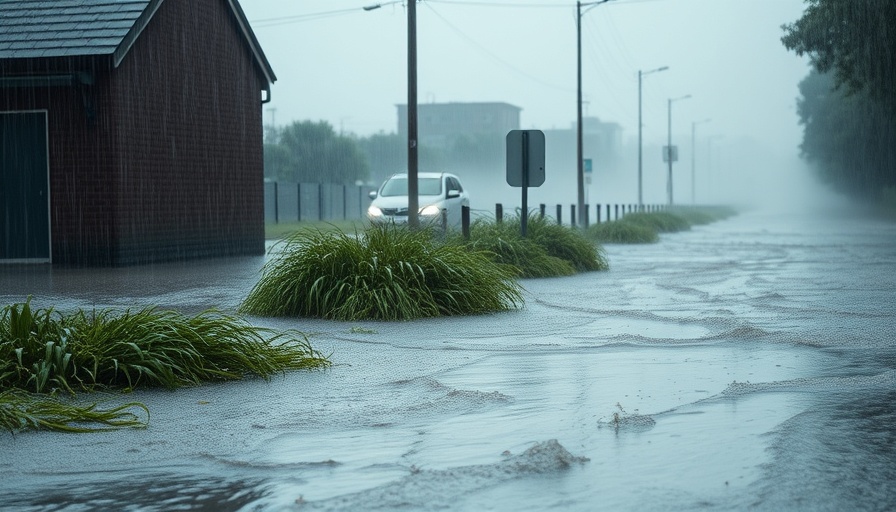
A New Round of Torrential Rains Hits West Virginia
In the aftermath of catastrophic flash flooding just weeks ago, the northern region of West Virginia is grappling with yet another round of severe weather. Residents of Wheeling, situated about an hour southwest of Pittsburgh, experienced a sudden and heavy downpour on June 26, 2025, as flash flood warnings were issued once more. This latest storm dumped up to two inches of rain, overwhelming local waterways and leaving communities in distress.
The Pervasive Aftermath of Climate Change
The National Weather Service indicates that inclement weather patterns—like those currently impacting West Virginia—are becoming increasingly frequent. This uptick is particularly alarming when considering areas that have faced severe flooding earlier this year. In mid-June, a devastating deluge swept through Wheeling, resulting in the tragic loss of nine lives, including a 3-year-old child. Authorities are keenly aware of the risks faced by residents, advising those in low-lying areas to prepare to move to higher ground, amidst fears that additional rains could exacerbate the situation.
Rising Water Levels and Community Resilience
Local social media posts provide visual evidence of streets transforming into rivers as rapid rainfall continues. The West Virginia Emergency Management Division shared an alarming image showing water levels rising unexpectedly—'From dry as a bone to five inches in 45 minutes'. This alarming shift showcases the level of unpredictability residents are forced to confront, reaffirming the need for improved infrastructure and emergency preparedness.
Human Stories Behind the Headlines
The toll inflicted by the flooding has not only been physical but deeply emotional. Families are still mourning the nine individuals who tragically perished in the earlier flooding. Victims such as 83-year-old Sandra Kay Parsons, who was found in the Ohio River, have highlighted the human element often overshadowed in news headlines. These stories remind us that behind the statistics are individuals with families, friends, and entire communities that are affected.
Historical Context and Challenges
This latest weather event places West Virginia’s challenges into a broader context. Earlier this year, heavy rains caused millions in damages and left communities reeling. McDowell County, one of the poorest in the nation, is still grappling with the aftermath as it seeks funding for recovery and infrastructure improvements. As floods become more frequent, local leaders must not only address immediate concerns but also look toward sustainable solutions for recovery.
Future Insights and Predictions
As climate change continues to impact weather systems, the risks of flooding loom larger than ever. Experts predict that unless significant changes are implemented, residents in regions like West Virginia will face similar conditions with increasing intensity. Building better flood-resistant infrastructure and creating comprehensive emergency plans are vital components of a long-term solution to protect vulnerable communities.
Take Action: Preparedness Matters
As West Virginia faces these crises head-on, now is a crucial time for communities to assess their emergency preparedness. Individuals should seek out local resources to understand evacuation routes and flood safety protocols. Investing time in learning about local weather patterns and recovery services can save lives, ensuring that families are ready to act when the next storm hits.
Conclusion
The tragic events in West Virginia exemplify the urgent need to address climate-related disasters and their human impacts. Through resilience and preparedness, communities can strive for a future where natural calamities are faced with better infrastructure and informed citizens. If you would like to learn more about how communities can prepare for flooding and other weather-related emergencies, please stay informed with local news and forecasts.
 Add Element
Add Element  Add Row
Add Row 



 Add Row
Add Row  Add
Add 


Write A Comment